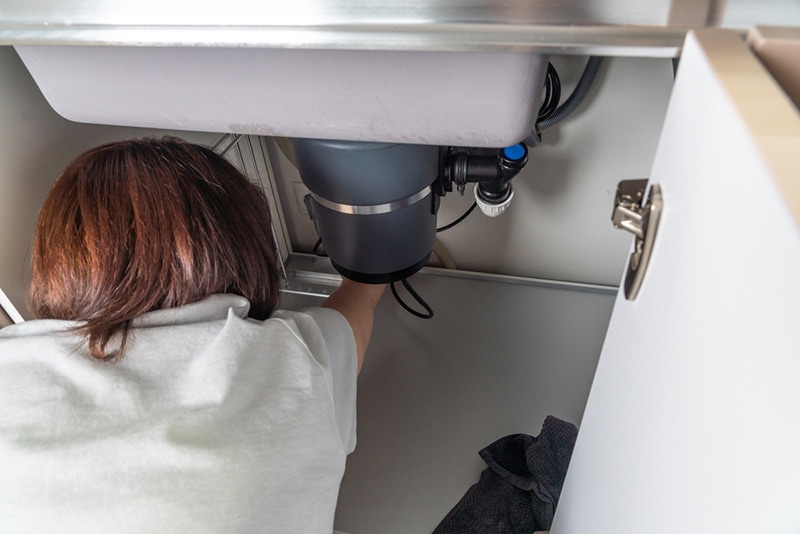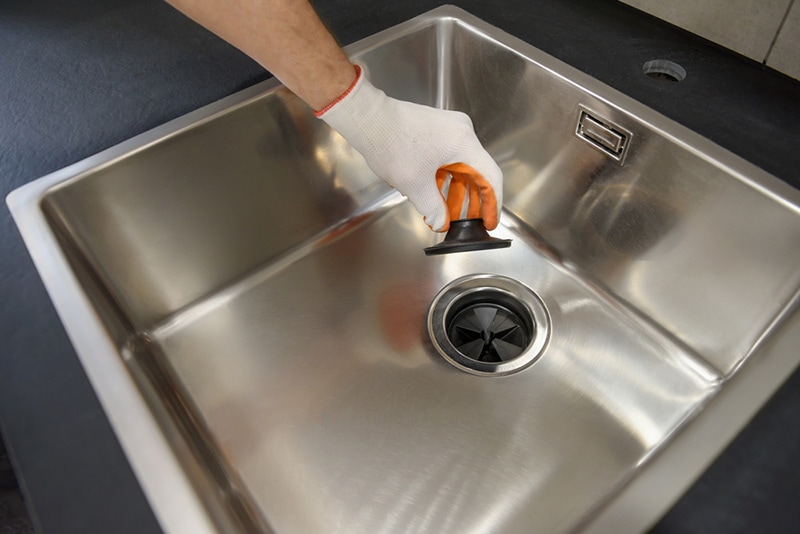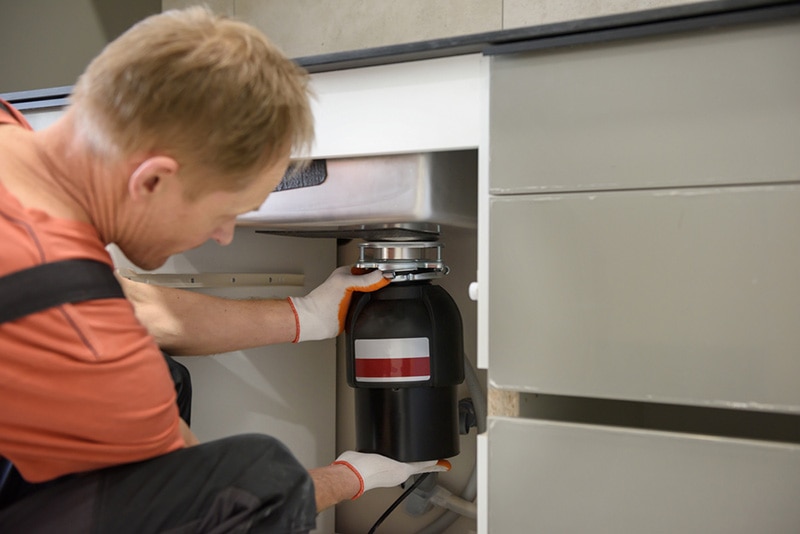How To Get Glass Out of A Garbage Disposal (9 Simple Tips)
-
Pete Ortiz
- Last updated:

Garbage disposals are often unfairly treated like a capable catch-all, but even the most ignorant among us know certain items don’t belong there in any capacity. When broken glass goes down the drain, it’s time to shut down the operation and apply a fix before you do any unnecessary damage to your appliance.
Unlike most items with no business being in the disposal, broken glass carries an extra safety hazard that can complicate the cleaning process. Spare yourself the risk of harming yourself or your home by following these nine tips on getting glass out of your garbage disposal.
The 9 Simple Tips to Get Glass Out of A Garbage Disposal
1. Turn Off the Disposal
Before clearing the glass from your garbage disposal, ensure it is off. Unplugging the disposal is easy enough if it has a plug under the sink. For a hardwired garbage disposal, turn off the breaker. Garbage disposals often have a dedicated circuit, though they may share one with your dishwasher.

2. Use Pliers to Remove Large Glass Pieces
Even with the power off, keeping your hands out of the drain and clear of the disposal is an essential safety measure. Instead of reaching in to pull out the glass, use a pair of long needle-nose pliers or a set of kitchen tongs to remove large shards.
Use a flashlight to look down the drain, adjusting the impellers to loosen additional glass pieces. A headlamp or a desk lamp with an adjustable neck will work well for hands-free lighting help.
You can also try jamming a soft material down the drain to embed pieces of glass and easily lift them out. For instance, you can cut off the end of a potato or take an old sponge to send down the drain and press into the disposal, grabbing as many small glass fragments as possible.
3. Suck Out Small Pieces of Glass with a Shop Vac
After removing as many pieces of glass as possible with your pliers, use a wet/dry vac to pull out any small remaining pieces. Use a long crevice attachment to get to the bottom of the disposal. Wear a pair of gloves while vacuuming the garbage disposal in case you need to remove any oversized pieces from the nozzle.

4. Turn the Blades with a Hex Tool
When you no longer hear the sound of glass running through the vacuum hose, there may still be small pieces lodged in the impellers. Before testing the disposal, use a hex tool to turn the impeller blades under the garbage disposal. Most garbage disposals include the appropriate wrench, which you can typically find attached to or near the unit under the sink. If you don’t have the tool, a ¼-inch Allen wrench will usually work.
Open your under-sink cabinet, and look for the small hex hole in the center of the disposal’s bottom side. Insert the wrench, and turn it clockwise and counterclockwise to move the impellers back and forth.
Continue vacuuming the inside of the unit after turning the blades, listening for the sound of glass coming up. You may need to alternate between moving the blades and vacuuming the disposal several times to get all the glass pieces.
If you have no tool to turn the blades from underneath the disposal, try moving them by putting something down the drain. Your pliers or another long tool will help you turn the impellers manually. Be careful with wooden tools like broom handles, as they can easily snap inside the disposal.
5. Cover the Drain Before Testing the Disposal
Your garbage disposal is ready for testing when you feel confident you have removed all the broken glass. But before plugging in your disposal, cover the drain with a plate or cutting board. As you’re testing the disposal, you want to avoid injury from missed glass shards accidentally flying out of the drain.

6. Power On Your Disposal
Plug your disposal back into the outlet, or turn the breaker on to power it up. Run cold water down the drain as you flip the switch and test the disposal. If you hear any grinding or disposal jams, power it off immediately to prevent damage, and continue trying to clean the remaining glass.
If you plug your disposal in only to find it doesn’t turn on, try resetting it. Unplug the unit, and press the reset button on the underside of the disposal. Then, plug it back in, and it should power up.
7. Remove the Disposal
If your shop vac isn’t removing all of the glass, you may have to remove the garbage disposal to work on it. Check your owner’s manual for instructions on unmounting it from the sink.
In many cases, you only have to twist off a locking bracket that connects the disposal to the underside of the sink. Others may have a snapping ring that pops on and off. The unit’s hex tool will often help you with the screw-type holder, but a flathead screwdriver can usually work for any mounting bracket.
Ensure you set up a bucket to catch water from the drain tube when you disconnect it. Garbage disposals are also quite heavy and typically require a helping hand or support to prevent them from falling after you unmount them.

8. Clean Your Vacuum
Empty and clean your shop vac immediately after vacuuming broken glass from your garbage disposal. Alongside the glass pieces, your vacuum also swallowed plenty of moisture and organic matter from old food, creating the perfect environment for mold to grow.
Glass shards are dangerous in any setting. You don’t want to risk someone hurting themselves the next time they empty the vacuum because they didn’t know there was broken glass inside.
9. Buy a Garbage Disposal Strainer for the Future
If glass is only one of the many accidental items to end up in the bottom of a garbage disposal in your home, consider buying a garbage disposal strainer. Like a standard sink strainer, these covers prevent large debris from falling into the disposal. A quality strainer is inexpensive, typically costing only $5–$10, and you can readily find them online and at home improvement stores.

Final Thoughts
When all else fails, contact a professional plumber about glass stuck in your garbage disposal. Running a disposal with glass or other hard materials can damage the impellers or plumbing down the line. If you follow these steps to get the broken glass out of your garbage disposal and don’t hesitate to call an expert to finish the job, you’ll dodge the substantial cost and headache of replacing a broken-down appliance.
Featured Image Credit: mariakray, Shutterstock
Contents



